#radia perlman
Explore tagged Tumblr posts
Text
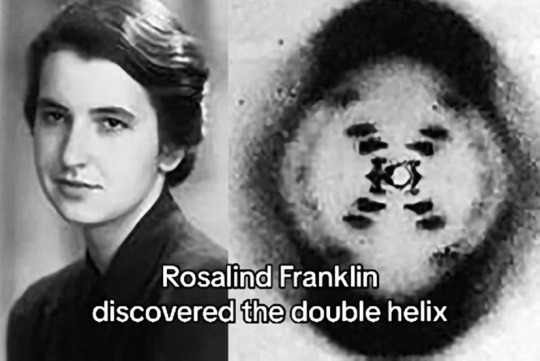
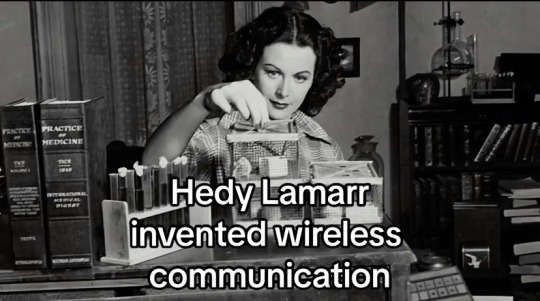
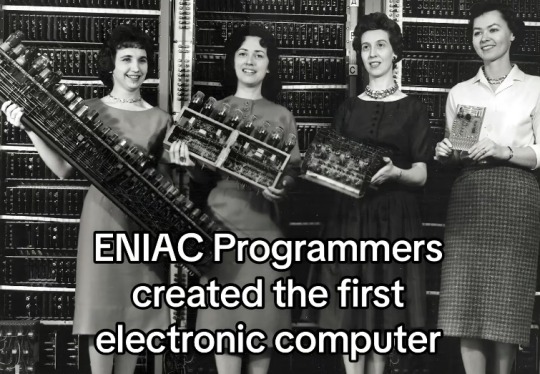
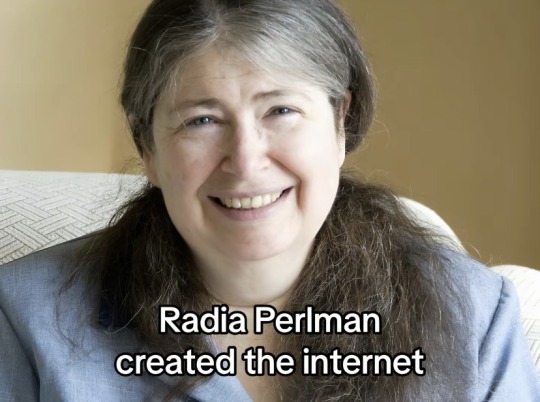
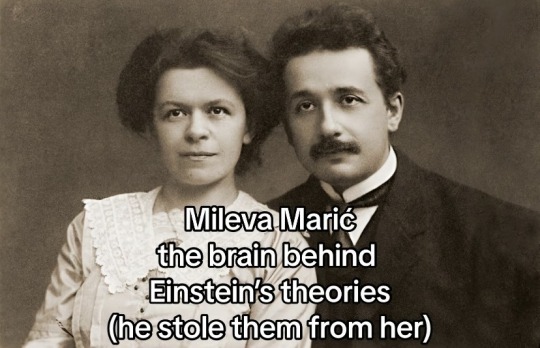
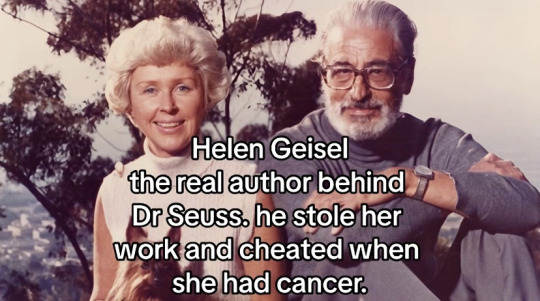
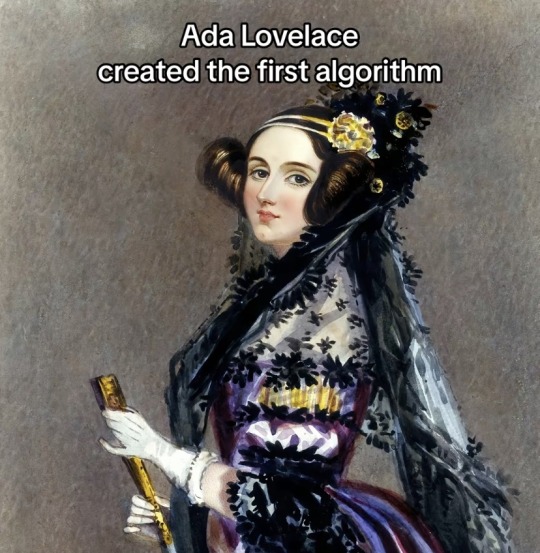

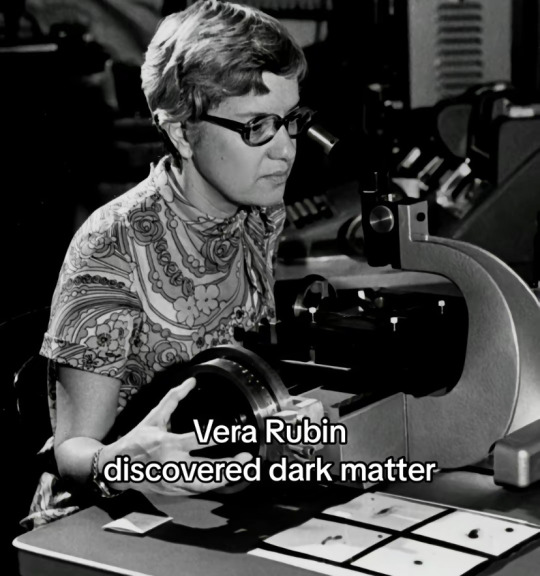
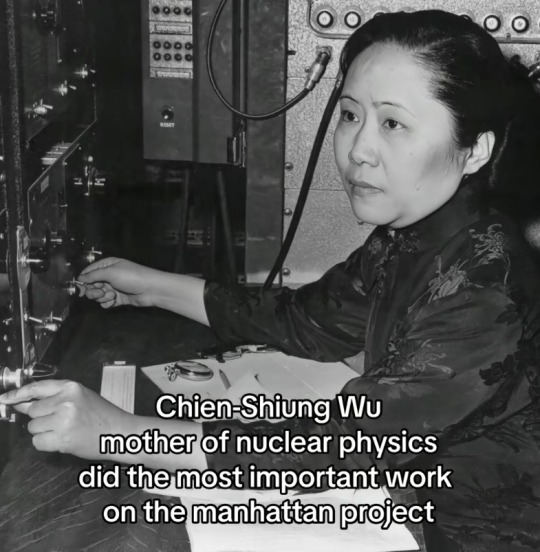
#women in stem#inspirational women#girl boss#i <3 women#rosalind franklin#hedy lamarr#radia perlman#mileva maric#helen geisel#ada lovelace#zelda fitzgerald#vera rubin#chien-shiung wu
49 notes
·
View notes
Text

According to the Tron Wiki, the character "Radia" is possibly named after the computer programmer Radia Perlman, whose contributions to network design (that are far too complicated for me as a layperson to understand) has earned her the nickname "Mother of the Internet".

She did once write a short poem about her work, a parody of Joyce Kilmer´s (in)famous poem "Trees":
Algorhyme
I think that I shall never see
A graph more lovely than a tree.
A tree whose crucial property
Is loop-free connectivity.
A tree which must be sure to span
So packets can reach every LAN.
First the root must be selected.
By ID it is elected.
Least cost paths from root are traced.
In the tree these paths are placed.
A mesh is made by folks like me
Then bridges find a spanning tree.
#Tron#Tron Evolution#Radia#Radia Perlman#Computer history#Poetry#If someone can explain her Spanning Tree Protocol in layman's terms I'd be delighted
104 notes
·
View notes
Text
Especial Dia da Mulher: Radia Perlman, a Mãe da Internet
Nesse dia da mulher homenageamos Radia Perlman, uma pioneira da tecnologia de redes que criou o protocolo de rede responsável por termos a internet mundial que temos hoje #diadamulher #internet #stp #radiaperlman
No Dia Internacional da Mulher, homenageamos as mulheres que deixaram uma marca indelével em seus campos de atuação, desafiando estereótipos e moldando o futuro, uma dessas mulheres notáveis é Radia Perlman. Cujo trabalho pioneiro no campo das redes de computadores a tornou uma figura lendária no mundo da tecnologia. Hoje, destacamos sua invenção mais famosa, o Protocolo de Árvore de Spanning…
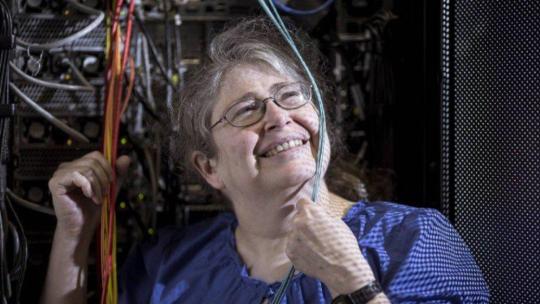
View On WordPress
#Cieência#Dia da Mulher#Dia Internacional da Mulher#internet#protocolo spanning tree#radia perlman#STP#Tecnologia
2 notes
·
View notes
Text
Radia Perlman

Radia Perlman, informatica statunitense, tra le maggiori esperte mondiali di software design e ingegneria informatica, è l’inventrice dello Spanning Tree Protocol (STP) che ha reso più efficiente la rete, ottimizzando il collegamento tra i suoi nodi.
Nominata Inventrice dell’anno 2004 dalla Silicon Valley Intellectual Property Law Association, è stata annoverata tra le 20 persone più influenti nel campo della tecnologia da Data Communications Magazine.
Nata a Portsmouth, in Virginia, il 18 dicembre 1951, da una coppia di ingegneri che lavorava per il Governo, ha vissuto a lungo in New Jersey. Brillante studentessa in scienze e matematica al liceo, dopo il diploma è stata tra le rarissime ragazze a frequentare il MIT (Massachusetts Institute of Technology) dove, nel 1976, si è laureata in Matematica.
Nel 1980, lavorando per Digital Equipment Corp, colosso dei computer, agli albori di internet, ha prodotto l’algoritmo per STP.
Nel 1988 ha conseguito il dottorato in informatica presso il MIT.
Ha lasciato Digital nel 1993 per lavorare per Novell e nel 1997 è entrata in Sun Microsystems, dove si è specializzata nella sicurezza di rete. Nel 2007, le è stato conferito il titolo di Distinguished Engineer.
Ha insegnato alle Università di Harvard e di Washington. Nel corso della sua carriera ha ottenuto circa 80 brevetti.
È l’autrice di Interconnections: Bridges and Routers e coautrice (assieme a Charlie Kaufman) di Network Security: Private Communication in a Public World, due fra i dieci più importanti testi in materia di networking.
0 notes
Text
100 Inventions by Women
LIFE-SAVING/MEDICAL/GLOBAL IMPACT:
Artificial Heart Valve – Nina Starr Braunwald
Stem Cell Isolation from Bone Marrow – Ann Tsukamoto
Chemotherapy Drug Research – Gertrude Elion
Antifungal Antibiotic (Nystatin) – Rachel Fuller Brown & Elizabeth Lee Hazen
Apgar Score (Newborn Health Assessment) – Virginia Apgar
Vaccination Distribution Logistics – Sara Josephine Baker
Hand-Held Laser Device for Cataracts – Patricia Bath
Portable Life-Saving Heart Monitor – Dr. Helen Brooke Taussig
Medical Mask Design – Ellen Ochoa
Dental Filling Techniques – Lucy Hobbs Taylor
Radiation Treatment Research – Cécile Vogt
Ultrasound Advancements – Denise Grey
Biodegradable Sanitary Pads – Arunachalam Muruganantham (with women-led testing teams)
First Computer Algorithm – Ada Lovelace
COBOL Programming Language – Grace Hopper
Computer Compiler – Grace Hopper
FORTRAN/FORUMAC Language Development – Jean E. Sammet
Caller ID and Call Waiting – Dr. Shirley Ann Jackson
Voice over Internet Protocol (VoIP) – Marian Croak
Wireless Transmission Technology – Hedy Lamarr
Polaroid Camera Chemistry / Digital Projection Optics – Edith Clarke
Jet Propulsion Systems Work – Yvonne Brill
Infrared Astronomy Tech – Nancy Roman
Astronomical Data Archiving – Henrietta Swan Leavitt
Nuclear Physics Research Tools – Chien-Shiung Wu
Protein Folding Software – Eleanor Dodson
Global Network for Earthquake Detection – Inge Lehmann
Earthquake Resistant Structures – Edith Clarke
Water Distillation Device – Maria Telkes
Portable Water Filtration Devices – Theresa Dankovich
Solar Thermal Storage System – Maria Telkes
Solar-Powered House – Mária Telkes
Solar Cooker Advancements – Barbara Kerr
Microbiome Research – Maria Gloria Dominguez-Bello
Marine Navigation System – Ida Hyde
Anti-Malarial Drug Work – Tu Youyou
Digital Payment Security Algorithms – Radia Perlman
Wireless Transmitters for Aviation – Harriet Quimby
Contributions to Touchscreen Tech – Dr. Annette V. Simmonds
Robotic Surgery Systems – Paula Hammond
Battery-Powered Baby Stroller – Ann Moore
Smart Textile Sensor Fabric – Leah Buechley
Voice-Activated Devices – Kimberly Bryant
Artificial Limb Enhancements – Aimee Mullins
Crash Test Dummies for Women – Astrid Linder
Shark Repellent – Julia Child
3D Illusionary Display Tech – Valerie Thomas
Biodegradable Plastics – Julia F. Carney
Ink Chemistry for Inkjet Printers – Margaret Wu
Computerised Telephone Switching – Erna Hoover
Word Processor Innovations – Evelyn Berezin
Braille Printer Software – Carol Shaw
⸻
HOUSEHOLD & SAFETY INNOVATIONS:
Home Security System – Marie Van Brittan Brown
Fire Escape – Anna Connelly
Life Raft – Maria Beasley
Windshield Wiper – Mary Anderson
Car Heater – Margaret Wilcox
Toilet Paper Holder – Mary Beatrice Davidson Kenner
Foot-Pedal Trash Can – Lillian Moller Gilbreth
Retractable Dog Leash – Mary A. Delaney
Disposable Diaper Cover – Marion Donovan
Disposable Glove Design – Kathryn Croft
Ice Cream Maker – Nancy Johnson
Electric Refrigerator Improvements – Florence Parpart
Fold-Out Bed – Sarah E. Goode
Flat-Bottomed Paper Bag Machine – Margaret Knight
Square-Bottomed Paper Bag – Margaret Knight
Street-Cleaning Machine – Florence Parpart
Improved Ironing Board – Sarah Boone
Underwater Telescope – Sarah Mather
Clothes Wringer – Ellene Alice Bailey
Coffee Filter – Melitta Bentz
Scotchgard (Fabric Protector) – Patsy Sherman
Liquid Paper (Correction Fluid) – Bette Nesmith Graham
Leak-Proof Diapers – Valerie Hunter Gordon
FOOD/CONVENIENCE/CULTURAL IMPACT:
Chocolate Chip Cookie – Ruth Graves Wakefield
Monopoly (The Landlord’s Game) – Elizabeth Magie
Snugli Baby Carrier – Ann Moore
Barrel-Style Curling Iron – Theora Stephens
Natural Hair Product Line – Madame C.J. Walker
Virtual Reality Journalism – Nonny de la Peña
Digital Camera Sensor Contributions – Edith Clarke
Textile Color Processing – Beulah Henry
Ice Cream Freezer – Nancy Johnson
Spray-On Skin (ReCell) – Fiona Wood
Langmuir-Blodgett Film – Katharine Burr Blodgett
Fish & Marine Signal Flares – Martha Coston
Windshield Washer System – Charlotte Bridgwood
Smart Clothing / Sensor Integration – Leah Buechley
Fibre Optic Pressure Sensors – Mary Lou Jepsen
#women#inventions#technology#world#history#invented#creations#healthcare#home#education#science#feminism#feminist
40 notes
·
View notes
Text
I think that I shall never see
A graph more lovely than a tree.
A tree whose crucial property
Is loop-free connectivity.
A tree which must be sure to span.
So packets can reach every LAN.
First the Root must be selected
By ID it is elected.
Least cost paths from Root are traced
In the tree these paths are placed.
A mesh is made by folks like me
Then bridges find a spanning tree.
By Radia Perlman (a computer networks engineer)
27 notes
·
View notes
Photo

Add to this list Radia Perlman. Among her 80 patents is Spanning Tree Protocol, without which modern computer networks would be vastly more cumbersome and prone to breaking down in traffic loops.
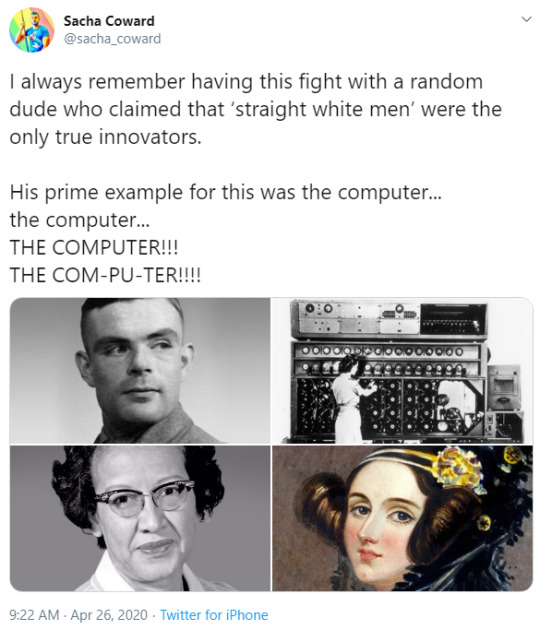
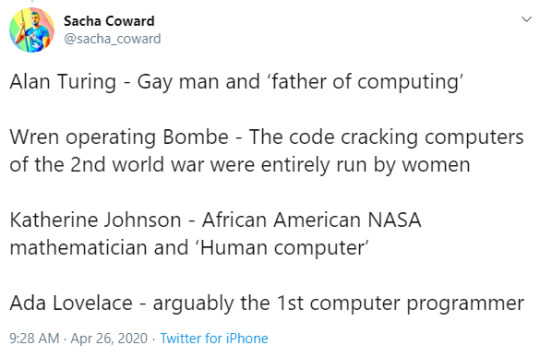

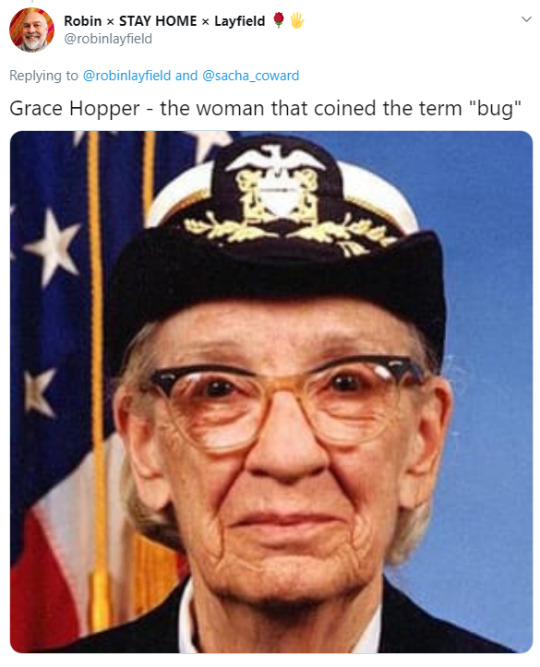
“I always remember having this fight with a random dude who claimed that ‘straight white men’ were the only true innovators. His prime example for this was the computer… the computer… THE COMPUTER!!! THE COM-PU-TER!!!
Alan Turing - Gay man and ‘father of computing’ Wren operating Bombe - The code cracking computers of the 2nd world war were entirely run by women Katherine Johnson - African American NASA mathematician and ‘Human computer’ Ada Lovelace - arguably the 1st computer programmer”
- Sacha Coward
Also Margaret Hamilton - NASA computer scientist who put the first man on the moon - an as-yet-unmatched feet of software engineering, here pictured beside the full source of that computer programme. #myhero
Grace Hopper - the woman that coined the term “bug”
- @robinlayfield
194K notes
·
View notes
Text
Con Gái Có Nên Học Ngành Điện Tử Viễn Thông Không? Cơ Hội Việc Làm Và Trường Đào Tạo Tốt Nhất
Ngành Kỹ thuật Điện tử Viễn thông từ lâu đã giữ vai trò then chốt trong khối ngành kỹ thuật – công nghệ. Với tỷ lệ việc làm sau tốt nghiệp ở mức cao, đây là một trong những lĩnh vực thu hút nhiều bạn trẻ, kể cả các bạn nữ. Tuy nhiên, nhiều người vẫn băn khoăn: Con gái có nên học ngành Điện tử Viễn thông không? Sau khi ra trường sẽ làm công việc gì? Bài viết sau từ Đại học Thái Nguyên sẽ giúp bạn giải đáp toàn bộ những thắc mắc đó.
Nội Dung Bài Viết
Con gái có nên học Điện tử viễn thông không?
Tiềm năng phát triển của nữ giới trong ngành Kỹ thuật Điện tử Viễn thông
Con gái học Điện tử viễn thông ra làm gì?
Con gái nên học Điện tử viễn thông ở đâu?
Kết luận
Con Gái Có Nên Học Ngành Điện Tử Viễn Thông Không?
Câu trả lời là: Rất nên! Các bạn nữ vốn sở hữu sự tỉ mỉ, cẩn thận – những tố chất vô cùng phù hợp với đặc thù công việc trong ngành Điện tử Viễn thông, đặc biệt là các công việc liên quan đến thiết kế mạch, lập trình điều khiển thiết bị và kiểm tra hệ thống.
Ngành này được chia thành hai mảng chính: phần cứng (hardware) và phần mềm/phần dẻo (firmware). Trong khi phần cứng thường được nam giới lựa chọn, thì phần firmware – bao gồm viết chương trình điều khiển thiết bị, xử lý tín hiệu, lập trình hệ thống – lại là "mảnh đất màu mỡ" cho nữ giới thể hiện khả năng.
Thêm vào đó, đa dạng giới tính trong các đội ngũ kỹ thuật hiện nay không chỉ giúp cân bằng môi trường làm việc mà còn thúc đẩy khả năng sáng tạo và hiệu quả xử lý vấn đề. Minh chứng rõ ràng là những nữ kỹ sư lừng danh như Radia Perlman – “mẹ đẻ của Internet” hay Hedy Lamarr – người đặt nền móng cho công nghệ nh���y tần hiện đại. Tại Việt Nam, cũng có rất nhiều nữ kỹ sư điện tử viễn thông thành công và được vinh danh.
Nếu bạn có đam mê với công nghệ, muốn tìm hiểu cách thế giới vận hành và kết nối, thì ngành Kỹ thuật Điện tử Viễn thông chính là lựa chọn lý tưởng – không phân biệt giới tính.
Tiềm Năng Phát Triển Của Nữ Giới Trong Ngành Kỹ Thuật Điện Tử Viễn Thông
Mặc dù số lượng nữ sinh theo học ngành này hiện nay còn khá khiêm tốn (theo thống kê của ĐH Bách khoa TP.HCM chỉ dưới 1%), nhưng nhu cầu tuyển dụng nữ kỹ sư lại đang tăng cao.
Lý do là ngành này yêu cầu độ chính xác tuyệt đối. Với công cụ làm việc chính là máy tính, chỉ cần một dòng lệnh sai cũng có thể ảnh hưởng đến cả hệ thống. Chính vì vậy, sự cẩn thận, kiên trì và khả năng xử lý tình huống khéo léo của nữ giới là điều vô cùng cần thiết.
Mức lương khởi điểm cho sinh viên mới tốt nghiệp ngành này dao động từ 9 – 10 triệu đồng/tháng, chưa kể các cơ hội phát triển nhanh chóng trong môi trường doanh nghiệp công nghệ. Nữ giới cũng đang được kỳ vọng mang đến những cách tiếp cận mới mẻ, sáng tạo cho lĩnh vực này.
Con Gái Học Điện Tử Viễn Thông Ra Làm Gì?
Các vị trí công việc phù hợp cho nữ giới trong ngành rất đa dạng và chủ yếu theo hướng nhẹ nhàng, linh hoạt nhưng vẫn đảm bảo yếu tố chuyên môn cao, như:
Hỗ trợ kỹ thuật: Giải quyết sự cố và vận hành hệ thống tại các doanh nghiệp.
Nhân viên quản lý dự án: Điều phối, theo dõi các dự án viễn thông trong môi trường văn phòng.
Tiếp thị & truyền thông kỹ thuật: Quảng bá các sản phẩm, dịch vụ công nghệ cao.
Phân tích dữ liệu – thống kê: Xử lý, phân tích số liệu phục vụ chiến lược kinh doanh.
Nghiên cứu và phát triển (R&D): Góp phần sáng tạo sản phẩm mới, đặc biệt trong lĩnh vực IoT, viễn thông di động.
Tư vấn kỹ thuật khách hàng: Hướng dẫn, hỗ trợ người dùng trong quá trình sử dụng dịch vụ.
Helpdesk – hỗ trợ người dùng: Giao tiếp, hỗ trợ kỹ thuật cho nhân viên trong công ty.
Đàm phán và xây dựng hợp đồng: Làm việc cùng đối tác trong các dự án lớn về viễn thông.
Phân tích trải nghiệm người dùng (UX): Cải thiện tương tác giữa người dùng với thiết bị/ứng dụng công nghệ.
Con Gái Nên Học Điện Tử Viễn Thông Ở Đâu?
Hiện nay, nhiều trường đại học hàng đầu tại Việt Nam đào tạo ngành này như:
Đại học Bách Khoa
Học viện Công nghệ Bưu chính Viễn thông
Học viện Kỹ thuật Mật mã
Đại học Công nghệ - ĐH Quốc gia Hà Nội
Đại học Giao thông Vận tải TP.HCM
Tuy nhiên, phần lớn các trường này đều có đầu vào khắt khe và yêu cầu học tập cao. Nếu bạn là người bận rộn hoặc có học lực khá trở xuống, có thể cân nhắc Chương trình Đào tạo từ xa ngành Điện tử Viễn thông tại Đại học Thái Nguyên – một lựa chọn linh hoạt và hiệu quả.
Ưu điểm nổi bật của chương trình:
Xét tuyển hồ sơ, không cần thi đầu vào
Học 100% online qua Zoom/Skype – linh hoạt thời gian
Thời gian đào tạo rút gọn chỉ 2 – 2,5 năm
Cam kết việc làm sau khi tốt nghiệp
Học phí hợp lý, tiết kiệm chi phí sinh hoạt và đi lại
Hiện tại, Đại học Thái Nguyên đang nhận hồ sơ tuyển sinh cho khóa mới trên toàn quốc. Nếu bạn quan tâm, hãy để lại thông tin [TẠI ĐÂY] để được tư vấn hoàn toàn miễn phí!
Kết Luận
Con gái hoàn toàn có thể học ngành Kỹ thuật Điện tử Viễn thông và thành công rực rỡ nếu có đủ đam mê và sự kiên trì. Với nhu cầu nhân lực cao, cơ hội nghề nghiệp đa dạng, mức thu nhập tốt và tiềm năng phát triển bền vững – đây là ngành học đáng cân nhắc dành cho nữ giới trong thời đại số.
Hãy mạnh dạn lựa chọn và chinh phục ngành học đầy thách thức nhưng cũng đầy triển vọng này nhé! https://elearning-tnu.edu.vn/con-gai-co-nen-hoc-dien-tu-vien-thong/
0 notes
Text
Spanning Tree Protocol is so cool. Everyone say "Thank you, Radia Perlman."
0 notes
Text
5 Inspiring female programmers every teen should know about

In a world where technology is shaping the future, it’s inspiring to see how women have played pivotal roles in the history of programming. From the early days of computer science to today’s tech innovators, these women have left an indelible mark on the industry. For teens looking to learn coding, their stories provide motivation and a reminder that coding is for everyone. Whether you’re new to programming or exploring the best online coding courses, these role models prove that the possibilities are endless.
1. Ada Lovelace (1815-1852)
Ada Lovelace is widely regarded as the first computer programmer, credited with writing an algorithm for Charles Babbage’s Analytical Engine in the 1800s. She was ahead of her time, imagining how machines could do more than just math, applying their capabilities to areas such as music and art. Her visionary thinking laid the groundwork for modern computing and highlights the endless possibilities that coding offers for teens today.
2. Grace Hopper (1906-1992)
Grace Hopper was a trailblazing computer scientist and U.S. Navy rear admiral. Known for developing the first compiler, she made programming languages more accessible. Hopper’s contributions led to the creation of COBOL, one of the earliest high-level programming languages. Teens today, especially those exploring the best online coding courses, can look to her as a pioneer who broke barriers in both tech and military fields.
3. Margaret Hamilton (1936)
Margaret Hamilton served as the lead software engineer for NASA’s Apollo program. Her software was crucial to landing astronauts on the moon. Hamilton also coined the term “software engineering” and emphasized the importance of error detection in code. Teens interested in learning coding for teens can admire her precision and creativity, knowing that coding is more than just problem-solving it’s about envisioning what’s possible.
4. Radia Perlman (1951)
Radia Perlman, often referred to as the “Mother of the Internet,” invented the Spanning Tree Protocol (STP), a key technology that ensures data can move smoothly and efficiently across networks. Perlman’s work in networking has shaped the internet as we know it today. For teens diving into coding, she represents how learning to code can lead to groundbreaking innovations in global communication systems.
5. Kimberly Bryant (1967)
Kimberly Bryant is the founder of Black Girls CODE, a nonprofit that empowers young girls of color to learn coding and enter the tech field. Her mission is to create a more inclusive tech environment by providing coding education to underserved communities. Teens who explore the best online coding courses can be inspired by Bryant’s commitment to making tech accessible to everyone.
Learn coding for teens why start early?
As these famous female programmers show, starting early with coding can lead to extraordinary accomplishments. Coding isn’t just about becoming a software engineer, it’s about developing critical thinking, problem-solving, and creativity. Learning coding for teens opens doors to diverse careers in tech, from video game development to artificial intelligence.
The stories of these incredible women show that coding isn’t just for adults or tech expert sits for everyone, including teens. If you’re interested in learning coding, remember that the best online coding courses are right at your fingertips, offering everything you need to embark on your own coding journey. Whether you’re inspired by Ada Lovelace’s early work or Kimberly Bryant’s modern-day impact, the world of coding is waiting for you to leave your mark.
1 note
·
View note
Text
DR. RADIA PERLMAN // COMPUTER PROGRAMMER
“She is an American computer programmer and network engineer. She is a major figure in assembling the networks and technology to enable what we now know as the internet. She is most famous for her invention of the Spanning Tree Protocol (STP), which is fundamental to the operation of network bridges, while working for Digital Equipment Corporation, thus earning her nickname "Mother of the Internet". Her innovations have made a huge impact on how networks self-organize and move data. She also made large contributions to many other areas of network design and standardization: for example, enabling today's link-state routing protocols, to be more robust, scalable, and easy to manage.”


0 notes
Text
Happy International Women's Day!
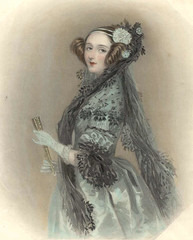
Ada Lovelace 1815-1852 The First Computer Programmer Learn more
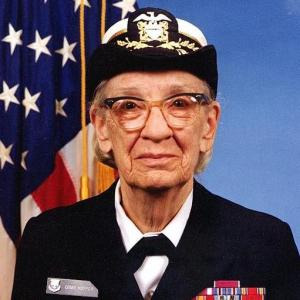
Grace Hopper 1906-1992 Mathematician, US Navy Rear Admiral Learn more
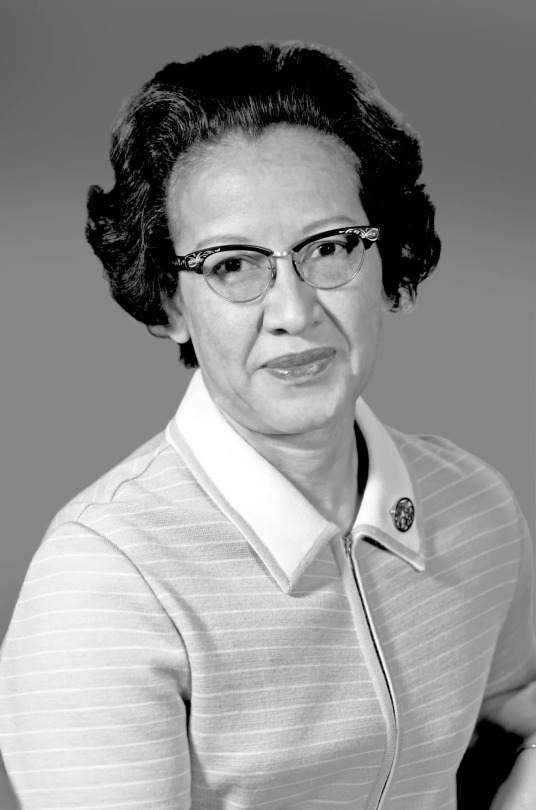
Katherine Johnson 1918-2020 American Mathematician Learn more
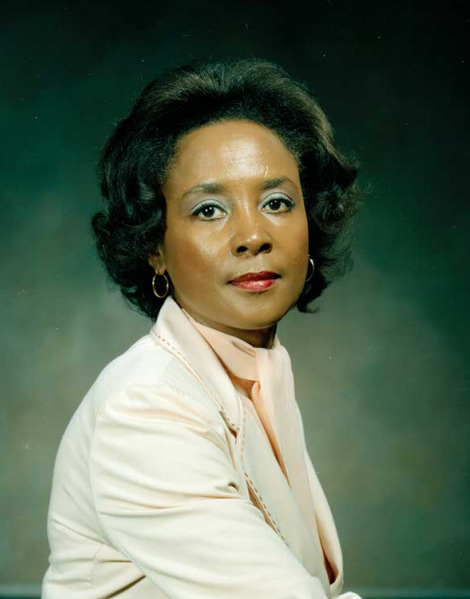
Annie Easley 1933-2011 Computer Scientist Learn more
There are so many women who are important in computer science. Click one of the links below to learn about many other women who have made incredible contributions to the field of computer science
Radia Perlman Sister Mary Kenneth Keller Tracy Chou Joy Buolamwini Jeannette Wing Margaret Hamilton Megan Smith Poornima Vijayashanker Adele Goldberg Frances Elizabeth Allen Lucía Gallardo Edith Clark Carol Shaw Ida Rhodes Stephanie Castillo Anita Borg Karen Spärck Jones Elizabeth Feinler Fei-Fei Li Ellen Ochoa
More...
Anitab.org - Supporting Women & Non-Binary People in Tech
Ada Developers Academy
Tech Ladies
0 notes
Text
当时它只是一个统计理论,但在 1994 年,Mike Burrows使用它创建了Alta Vista搜索引擎。 拉迪亚·帕尔曼,“互联网之母” Radia Perlman (1951) 是一位计算机科学家,她发明了 STP(生成树协议)通
0 notes
Text
Innovators Unite: Celebrating Diversity at the International Technology Awards

Are you ready to celebrate diversity and innovation at the International Technology Awards? Innovators from around the world are coming together to showcase their groundbreaking contributions to the tech industry. This event is a platform for recognizing the brilliance and creativity that arises from diverse perspectives, experiences, and backgrounds. Join us as we honor the trailblazers who are shaping the future of technology through their unique visions and talents.
The Prestigious International Technology Awards
Recognizing Innovation and Excellence
At the International Technology Awards, innovation and excellence take center stage, celebrating the groundbreaking contributions of visionaries in the tech industry. This prestigious event sets the standard for global recognition, honoring the relentless pursuit of innovation and pushing the boundaries of what is possible.
Through an intricate selection process, the Awards applaud companies and individuals who have conceived, developed, and delivered game-changing technologies that redefine the industry. The annual ceremony creates a platform where innovators are acknowledged, lauded, and given the opportunity to shine on an international stage. This acknowledgment is not just an honor for the recipients, but also a catalyst for further pioneering advancements that shape the future of technology.
Global Impact and Influence
The International Technology Awards not only spotlight innovation but also recognize the global impact and influence that technology has on societies and economies worldwide. As technology continues to evolve, its influence transcends borders, revolutionizing industries, empowering communities, and fostering advancement on a global scale.
The awarded technologies are those that embody the potential to positively impact, enhance, and transform lives on a global level. They are the driving force behind societal and economic progress, serving as a testament to the transformative power of technology in addressing global challenges and creating opportunities for a brighter future. Through the recognition of global impact and influence, the Awards inspire a collective commitment to harnessing technology for the betterment of humanity.
Embracing Diversity in Technology
Breaking Barriers and Challenging Norms
In the world of technology, diversity is not just a buzzword; it is a crucial element for progress and innovation. Embracing diversity means breaking barriers and challenging norms that have limited the industry for too long. By welcoming individuals from different backgrounds, experiences, and perspectives, the technology sector can tap into a wealth of varied ideas and fresh approaches. This diverse tapestry of thought fosters an environment where creativity thrives and new solutions emerge.
Fostering Inclusivity and Collaboration
Fostering inclusivity in technology is about creating an environment where everyone feels valued and has the opportunity to contribute meaningfully. It's about building a culture that promotes collaboration and teamwork, where each person brings their unique strengths to the table. By embracing inclusivity, the industry can harness the power of collective intelligence, leading to more innovative products and solutions. When diverse voices are not just heard but actively listened to, the technology community becomes all the more vibrant and impactful.
Celebrating Innovators from Diverse Backgrounds
Women Trailblazers in Technology
Women have been breaking barriers and making significant contributions to the field of technology, despite historical underrepresentation. Individuals like Ada Lovelace, Grace Hopper, and Radia Perlman have paved the way for future generations. Today, women continue to lead the charge in technological innovations, from developing cutting-edge software to spearheading AI research. Their unique perspectives and inventive ideas have propelled the industry forward, inspiring others to pursue careers in technology.
Pioneering Innovations from Minority Communities
Minority communities have played a pivotal role in driving technological advancements. From the groundbreaking work of Dr. Shirley Jackson in telecommunications to the revolutionary impact of Mark Dean in computer engineering, these visionaries have left an indelible mark on the industry. Through their relentless determination and groundbreaking inventions, they have reshaped the technological landscape, proving that diversity fosters innovation. Their contributions serve as a testament to the wealth of talent and ingenuity that exists within diverse communities.
The Power of Inclusive Innovation
Diversity in the tech industry has the power to drive innovation and technological advancements, shaping a future that is inclusive and representative of global demographics. Embracing diverse perspectives and experiences is not just a matter of fairness; it is an essential element for driving progress and nurturing creativity in the technological landscape.
Driving Technological Advancements through Diversity
Innovation thrives in environments where a wide range of perspectives and ideas are welcomed. When individuals from different backgrounds, cultures, and experiences collaborate, they bring a breadth of insights that can lead to groundbreaking technological advancements. By embracing inclusivity, the tech industry can push the boundaries of what is possible and create solutions that cater to a more diverse audience.
Inspiring the Next Generation of Innovators
When aspiring technologists see individuals who resemble themselves succeeding in the industry, they are encouraged to pursue their own ambitions. Celebrating diversity at technology awards and showcasing the achievements of innovators from various backgrounds can inspire the next generation to pursue careers in tech. By highlighting diverse role models, we can ignite a passion for innovation in young minds and foster a future generation of diverse tech leaders.

Conclusion
In conclusion, the International Technology Awards stand as a testament to the power of diversity in driving innovation and progress in the tech industry. By uniting innovators from diverse backgrounds, these awards fuel a culture of collaboration and creativity that propels technology advancements forward. Embracing and celebrating diversity not only enriches the tech community but also yields groundbreaking solutions that positively impact the world. Join the celebration of diversity at the International Technology Awards and be part of the driving force behind the future of technology.
0 notes
Text
nothing has made me happier recently than learning that the creator of the spanning tree algorithm promptly wrote a poem abt it:
I think that I shall never see
A graph more lovely than a tree.
A tree whose crucial property
Is loop-free connectivity.
A tree that must be sure to span
So packets can reach every LAN.
First, the root must be selected.
By ID, it is elected.
Least-cost paths from root are traced.
In the tree, these paths are placed.
A mesh is made by folks like me,
Then bridges find a spanning tree.
—“Algorhyme” by Radia Perlman
#poetry#radia perlman#an art form that fights back#based on ‘trees’ by joyce kilmer#sorry idk how to make the formatting better when im on my phone
4 notes
·
View notes